Recently, at Honolulu Airport, we experienced firsthand the ripple effects of operational challenges that travelers have come to associate with Southwest Airlines in Hawaii. Short neighbor island flights, scheduled for nearby interisland hops, were delayed as much as three hours. Why? Two inbound planes were coming from the mainland—a common scenario given Southwest’s lack of a dedicated interisland aircraft fleet. This delay, while frustrating, underscores a broader issue: the fragile state of flights in Hawaii.
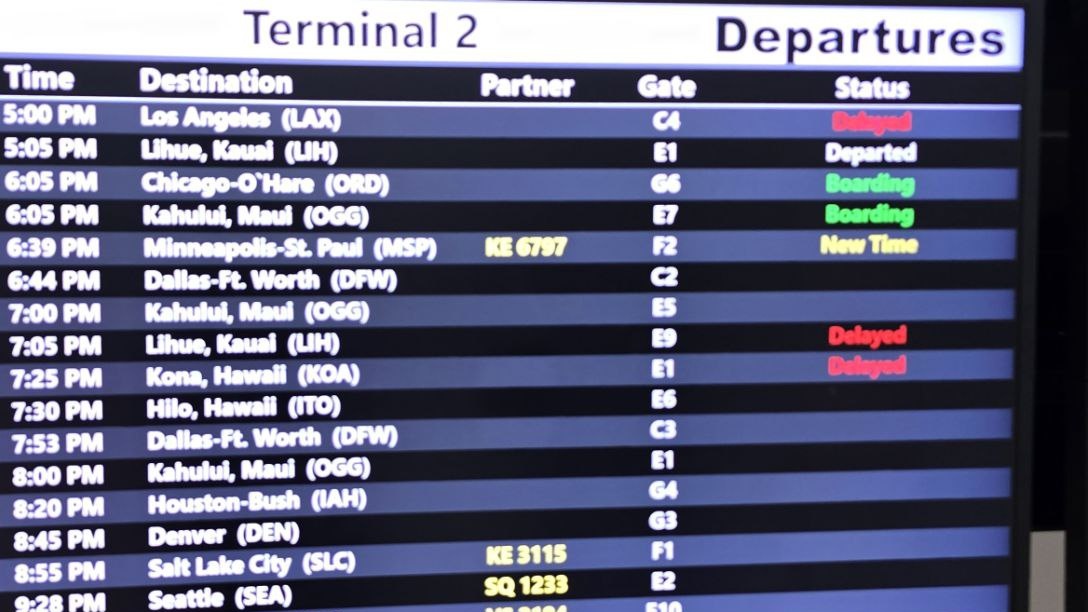

Southwest: the cost of no Hawaii-based fleet.
Unlike Hawaiian Airlines, which operates a fleet of aged Boeing 717s specifically for interisland service, Southwest relies on newer planes that double as mainland and interisland carriers, Boeing MAX 8. Southwest’s strategy features the potential for cascading delays when mainland flights run late, as occurred again in this example. Their interisland routes depend entirely on aircraft shuttling from and to the mainland. For travelers, this can mean missed connections, hours waiting at airports as we encountered, and rising frustration with an airline whose model struggles to meet Hawaii’s remote and unique needs.
Reader comments highlight this frustration. Srini R. observed, “Interisland flights are never on time since your plane may be coming from the mainland. They don’t treat Hawaii as a mini-hub with dedicated interisland planes.”
Others have noted additional challenges, such as gate arrangements that require agricultural inspections for Southwest interisland flights. For example, John H. shared, “Southwest’s operations make interisland travel more frustrating, especially with the added hassle of ag checks.”
Aging Hawaiian vs. operationally challenged Southwest.
While Hawaiian Airlines’ fleet of nearly quarter century old 717s has drawn criticism for its noise, tight seating, and limited overhead space, the airline benefits from decades of experience and multiple fleets over time, catering to Hawaii’s interisland market.
Hawaiian’s dedicated planes allow for higher frequency and flexibility, including when things go wrong. As Jordan noted, “Flying the larger (Southwest) MAX interisland is terrible aircraft utilization… an airplane that expensive needs to be kept in the air to make money, not sitting around waiting to fly an interisland flight.”
Will Hawaiian’s 717s be replaced soon?
Hawaiian Airlines’ aging fleet of Boeing 717s has been the cornerstone of interisland travel for decades, but its future is increasingly in question. While airlines like Qantas have retired their 717s entirely, Delta plans to phase out its 717 fleet as soon as feasible. However, industry-wide delays in the arrival of replacement aircraft appear to have led Delta to expand its use of the 717 temporarily, including on some routes next summer.
For Hawaiian—and now its new parent company, Alaska Airlines—modernization presents both opportunities and challenges. Travelers often highlight the shortcomings of the 717, with one commenter stating, “Tight seating, noisy cabins, and small overhead bins don’t compare well to newer models.” Despite this, the 717 continues to serve its its vital role of offering reliable capacity for both passengers and cargo on interisland routes.
Modern aircraft like the Airbus A220 and Embraer E175 remain potential replacements. As one commenter noted, “The A220 offers quieter cabins, greater fuel efficiency, and better capacity—exactly what Hawaii travelers need.” However, others point out that the A220 may not be cost-effective for short interisland flights, with yet another commenter explaining, “The E175 is comfortable, efficient, and perfect for interisland flights, but the A220 might be too costly for these routes.”
Hawaiian/Alaska’s reliance on the 717 also reflects its role in the islands’ cargo operations, as one observer highlighted: “Hawaiian runs a cargo operation that capitalizes on the excess capacity of the 717. A wrong decision on replacement aircraft could jeopardize both passenger and cargo services.”
While Alaska Airlines is known for its fleet efficiency and strategic adaptability, its preference for familiar aircraft like the Boeing 737 and E175 suggests it may delay adopting yet more new models like the A220. That, while it is in the process of assimilating the A321neo and A330 fleets from Hawaiian. For now, Alaska appears to be maintaining the status quo, even as competitors push forward with fleet modernization and they have said that nothing is imminent in this regard.
Alaska Airlines operates a relatively young fleet compared to other U.S. carriers serving Hawaii.
Just prior to acquiring Hawaiian, Alaska’s fleet had an average age of approximately 8.9 years, reflecting its commitment to ongoing fleet modernization. In comparison, other major airlines flying to Hawaii, such as American Airlines, United Airlines, and Delta Air Lines, operate older fleets averaging 12.6 years, 16.7 years, and 14.9 years, respectively. The acquisition of Hawaiian Airlines added significantly older planes, most notably the Boeing 717s, to its portfolio.
The question remains: will Alaska seize this moment to modernize, as has been their nature, or will they continue to rely on a legacy fleet that has defined Hawaii air travel?
Southwest’s MAX 8 serves both mainland Hawaii flights and interisland.
Southwest, on the other hand, operates a virtually new Hawaii fleet (3 years), and starting in 2025, the airline plans to introduce assigned seating, eliminating one of the most notable differences between the two carriers in our market. However, with interisland delays like these, travelers may wonder if newer planes and assigned seats can outweigh the inherent logistical shortcomings of no planes based within 2,500 miles of Hawaii.
What travelers are saying.
Traveler sentiment is as divided as the competition itself. Some appreciate Southwest’s low fares and extra legroom. Martha G. shared that Southwest has made her trips “so much easie” with “lower prices, no change fees, and companion fares.” But others, like Cockroach, have expressed frustration: “The public is voting with their wallet & Southwest is coming up short… multiple bad experiences is not worth the savings of low cost!”
Meanwhile, rising airfares remain a sticking point for all Hawaii travelers. As Gaga observed, “Hawaii residents really need Southwest. If they don’t have it, Hawaiian will go back to charging $150 for an interisland flight.”
Yet, many travelers remain loyal to Hawaiian for its reliability and local touch, with comments like Andy’s: “I will spend more money and fly Hawaiian every single time. Southwest is terrible.”
What’s the future of interisland competition?
The challenges Southwest faces in Hawaii highlight the fragile balance of island competition. Hawaiian’s aging fleet continues to dominate the market due to its reliability and highly tailored operations. Beyond that, Alaska Airlines is a company known for prioritizing a state-of-the-art fleet. Meanwhile, Southwest’s struggles with reducing flights in 2025, and delays amid logistics risk alienating travelers despite its helping keep fares competitive.
As one commenter noted about interisland, “Many flights even operate at a loss. Can’t imagine how much Southwest is losing on their half-empty flights while beating up their airframes.” For both airlines, the decisions they make now—whether addressing operational inefficiencies or upgrading fleets—will determine their future in this challenging market.
We welcome your thoughts.
Get Breaking Hawaii Travel News
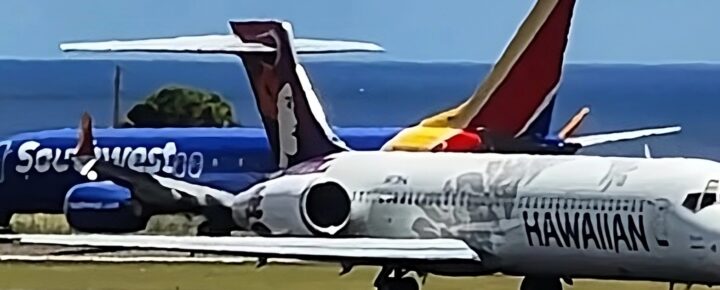
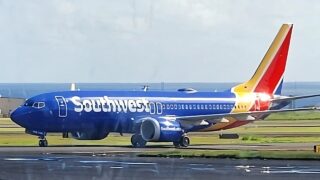
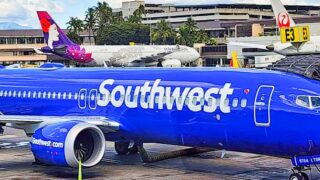
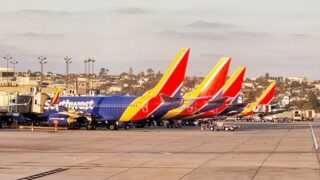
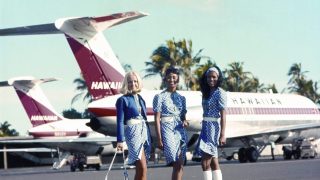
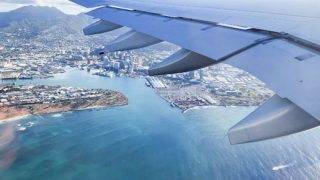
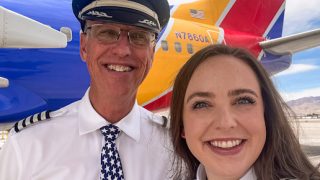
I had thought the A220 would be a good replacement, up until the Alaska buyout. Since Alaska is an all Boeing airline, what would be a replacement for the 717? The 737-Max 7 which is still to be certified? Since I have no idea of what the operational costs are, all I can do is wonder? What percentage of occupancy do you need to turn a profit on the A220? The Embraer 175? Then there is the question of cargo. Glad I am not the one to have to make the decision!
JimT: Good ideas. Add the EMB E2 to the 220-300 and the Max 7. These are all good alternatives, very similar but they are sold out for years. Breeze is setting up to fly the -220 to the islands from the west coast. So you could see the type doing inter-island as well. They would have the same issue SWA has. No spare A/C in the islands. All would lease for very high rates because they are new. That will flow down to high ticket prices. I still believe older Regional jets that lease at much lower rates would be a better idea because ticket prices could be much lower and the airline could be profitable. They are doing well in these kinds of markets on the mainland.
I’ve been flying around the islands for 40 years and have watched the different alternatives to inter island flights and they have all failed. Remember those small planes, I could fly from Oahu to West Maui’s, Airport beach and there were always stops to let off locals shopping on Oahu to Lanai. They closed Airport Beach and opened West Maui Airport with twin prop 50 passenger planes but that failed as well. Now West Maui airport is either closed or just abandoned.
All the different ferry services that have failed.
I think the main change are all the direct flights to all islands limiting the need for inter island fights, when we all flew to Oahu than on to other islands the need was much greater.
Now with Hawaii’s tourism business in decline we will see higher and higher prices for inter island fares.
A ferry is probably not going to happen. But there are tons of older regional jets available that could be used. In the Midwest there are several very low cost operations going on serving small airports with federal subsidies. The key is to have the operation fully island based. Maintenance on each island as well as spare aircraft. If our incompetent state leaders would address this, they could have a PPP airline operator in place in a few months.
JA, yes the eco-warriors killed the ferry. Problem with Regional Jets is the lack of carry on space in bins coupled with limited headroom and narrow width. Neither of these suit this market. The logical choices would be the smallest B737 MAX that gets certified or the smallest A320 neo. Cannot see Hawaiian going for the Airbus given the trouble they have had with their current fleet being out of service for ages.
Thanks Rich. Of course the 50 seat RJ’s failed when the other two carrier’s were offering larger cabins at the same price and loosing money on every flight. The current providers of inter island service are Not going to loose money in this market. This thread keeps saying neither of the larger cabin offerings are acceptable and the price is too high. I also don’t buy the “This market” comment. If an operator came in and ran 50-70 seaters between the islands and they were reliable with inexpensive tickets and ran frequently, people would be more than happy to gate check their carry-ons and put up with the smaller cabin for the time it takes to go inter-island. On the mainland, it’s common to fly in these “Not good enough for the HI market” planes for 2 hrs. This has been the standard on the mainland for small cities for 30 years. If Alaskan doesn’t do it, someone else will come in and take their customers.
Hi JA, I think we have different views. Remember the failure of Mesa Air’s GO! RJ service which didn’t work out. All they did was drive Aloha out of pax business. There is always Mokulele with Small T/Props.
It’s happening every day on the mainland CRJ and EMB-135/145 fleets 1 hr radius from major hubs competitively priced to the full cost of driving.
How about an interisland ferry?
SWA doesn’t interline so they’ve got no alternative except to do what they’re doing regarding inter-island service. If they were to station spare crews and aircraft in the islands, they would probably aggressively try to take all of Hawaiian’s inter-island business. That’s not going to happen. But you could see them “ “milk run” like UAL and Ozark used to do before regional jets were available. Fly mainland to a smaller island with a stop in another island. Quick turn. Only passengers arriving and departing from the intermediate stop get on or off the plane. All one flight number.
SWA inter-island flights lack Aloha, and that will always make it difficult for them to survive here. I recently took SWA to OGG and back to HNL just to burn off miles since I rarely fly SWA anymore. First off, the flight was empty so the FAs were seating us to balance the plane which I understand but there was no greeting as we got on the plane, just no sitting in rows where the overhead bins were closed.
Next message, due to the 20 minute flight, no snacks or drinks.
There was no warmth from any of the FAs. Sure they made their jokes during the mandatory announcements but it lacked any type of connection to the Aina.
I flew back to Maui again yesterday but this time, on my favorite HA, flight was full, I got my POG and was greeted on the way in and thanked the way out.
Yes, I can appreciate SWA’s push to bring competition to HA. My advice, at least learn to have some Aloha during neighbor island flights because islanders expect it and it is part of our culture.
I fly from Boston to the Big Isle every year to spend a month at my timeshare. I have often wondered why do I have to change planes in HNL ?Last year I was able to find a flight that went Bos-west coast then direct to Kona ….no middle stop…no waiting another 1-2 hours for inter island flight. It cost more but it cutout HNL!It took time and multi searches but it was worth it.
Southwest is not a good company or airline, and it’s losing money fast on Hawaii interisland.
The comment in the article bemoaning $150 interisland should see if they can run an airline at that little price.
The distance of interisland should really be served by Dash 8 prop planes. Jets are really wasteful on these short flights. With Alaska, you’re going to get E175 or 737. If flights are high, there’s room for a new Hawaii startup flying prop planes, though Hawaiians would need to lead that start up for success….
Aloha, Its getting old hearing BOH beat up on SWA! Our daughters flight HA LAX to HNL last Christmas eve was cancelled with no explanation and no rebooking! I was finally able to get on a chat on the HA website where the CSA noted it was a crew shortage cancelation, again with no alternative offered. Could this be due the operational challenges with HA at LAX? Humph! Southwest will never charge $3,000+ for a mainland to Hawaii flight or $189+ interisland hop. Alaska/Hawaiian are more than willing on the regular to do so, and will continue to squeeze local customers whenever the opportunity presents itself! In spite of myriad challenges operating a business in Hawaii (particularly an airline)Southwest was here throughout the pandemic and are in it for the long haul. When travel demand picks up and the new max 7’s finally arrive in southwest fleet, we locals will be increasingly blessed by SWA’s “we are in the service business, and its just incidental we fly airplanes” attitude!
Danj, there is no doubt that when things go wrong, equipment goes tech, bad weather etc; Hawaiian management tends to make the problems worse but they are not the only carrier this applies to. I think you have to grasp that to many residents, be they true kama’aina or malahini, that there is a pride in what they see as their airline and that is why excuses can be made and the Hawaiian attitude to timings comes to the for. Whether that will remain now Mainland Alaska have their hands on it, we shall see.
Hawaiian is delayed every day on their late afternoon and evening flights. Their “efficiency” only lasts about 4pm, if it’s after 4pm, your flight is most likely going to be late.
Considering the low altitude and slower inter-island flights, why no discussion about the more efficient turboprop aircraft?
re: Southwest Interisland Service. Don’t be surprised if United sometime in the next few years sets up a mini-hub at HNL with 737 jets to compete with Hawaiian should Southwest bow out. It could be linked to the existing United mini-hub at Guam that operates 737 services throughout the Western Pacific region, as well as the famous “Island Hopper” service between HNL and Guam. Plus United could add American Samoa and other island destinations to the south of Hawaii and possibly have a Hawaii – Samoa – New Zealand route using HNL based Max 8 737 jets. Never say never.
I believe it’s highly likely that Alaska will replace some of the Hawaiian 717s with E175s. Maybe they’ll mix E175s with 737-7s. Their Horizon subsidiary flies E175s exclusively and have more on order. Given that with the acquisition AS just went from having just 737s to now having 717s, 321s, 787s and 330s, I doubt that they’d want to take on having 220s.
I’ve been totally happy with Southwest, the staff is always friendly, you know what you’re going to get and I pay a lot less now to fly to Hawaii than 20 years ago. Oakland to Maui and back direct as low as 99 bucks each way.
I really like the B717’s and I liked the MD80’s and the DC9’s before that. Up the front they Rare very quiet, have good bins and are ideal for the runway challenges in Hawaii. I dread them being replaced with A220 or EMB170’s 190’s Regional Jets with no headroom and making you check all carry on bigger than a small purse. I think it unlikely the 737 Max 7 will be chosen given the certification problems and Airbus would need to give them away to sell any A320 neo after the engine problems with their current planes. All that said if you look at both Alaska and Delta fleets they have many planes that are in the mid 20’s years old too (though tropical high rotation flights do require much more scrutiny).
Hawaiian Airlines runs a relatively efficient operation. Yes, the aircraft are due for replacement sooner rather than later, but operationally, Hawaiian delivers far better reliability.
Someone commented about the possibility of $150 one-way airfares, which is probably below what it actually costs Hawaiian to operate the route. But because of the geographic nature of our island state, the public needs subsidized air service.
Drew 808, who do you think should pay for the subsidized fares? Locals already pay high prices and high taxes and visitors do not benefit from Kama’aina Fares. As inter island is intra state the Federal Government is unlikely to subsidize them. Perhaps if Aloha had not been driven into bankruptcy by the mainland start up that left and the super-ferry had not been scrapped prices might be lower. I am hoping the GEV development will enable a lower cost model not needing airports, runways etc.
Rich,
Until there’s a viable alternate form of inter-island transportation, fares will either need subsidies so that folks can afford to travel or set at a price where airlines can afford to operate. Hawaiian currently subsidizes inter-island flights to a degree with revenue generated from its long-haul business. But with high-revenue Japan travel still down, there’s a limit on how much Hawaiian can underwrite the cost of inter-island flights. $75 fares don’t generate sufficient income to cover fuel, employees, aircraft, airport facilities, etc. Southwest has learned this the hard way.
Drew 808, and we know it will be the latter. Hawaii fares are not that bad compared to the mainland for example LGA-PHL is around $350, ORD-MKE is around $330 and LAX-PSP is around $220 one way. Locals are used to having a frequent jet service at prices they could afford. Hawai’i is very conservative with a small c, just look at the HART progress.
“But because of the geographic nature of our island state, the public needs subsidized air service.”
Exactly who should be doing the subsidizing? The feds? Not a good time for that.
The tourists who pay for mainline flights? That’s not sustainable.
Mark, most of it is self-subsidized from the higher-yielding long-haul routes. But if airfares continue to climb, the State or Feds may need to step in with some additional creative solutions.
The lack of a dedicated interisland fleet is really catching up to Southwest. They’ve made it clear in more ways that one that Hawaii isn’t a priority, and it shows in their decisions. This is a bummer for those of us hoping they would continue to help.
If Hawaii wasn’t a priority for SWA they would have pulled out a long time ago! They have invested heavily in Hawaii and will more effectively utilize their aircraft once Boeing gets it together. Unlike HA, you will never see layoffs, furloughs, and bankruptcies from Southwest. A bet on Southwest leaving Hawaii is a fools errand. Thank goodness for SWA tenacity in a very difficult market.
Hawaiian needs to replace those old planes. I’d rather pay a bit more for a comfortable flight than deal with noisy, outdated technology. Hope this comes sooner than later.
I’ll stick with Hawaiian for now. Their planes might be older, but they’re reliable, and I know I won’t be stuck waiting hours for a delayed flight from the mainland when I’m heading to Honolulu for a meeting.
Southwest could really do so much better interisland if they fixed their delays and added assigned seating. Hawaiian’s planes are showing their age, and competition is badly needed.
It’s disappointing to see Southwest struggling. They brought competition to Hawaiian, but now they can’t seem to keep it up.
I appreciate Southwest’s lower fares, but unpredictability about delays has gotten ridiculous. Hawaiian isn’t perfect, but at least their schedule is something I can generally count on.
Interisland flying in Hawaii feels like a lose-lose situation right now. Hawaiian’s planes are ancient, and Southwest can’t seem to stay on schedule.